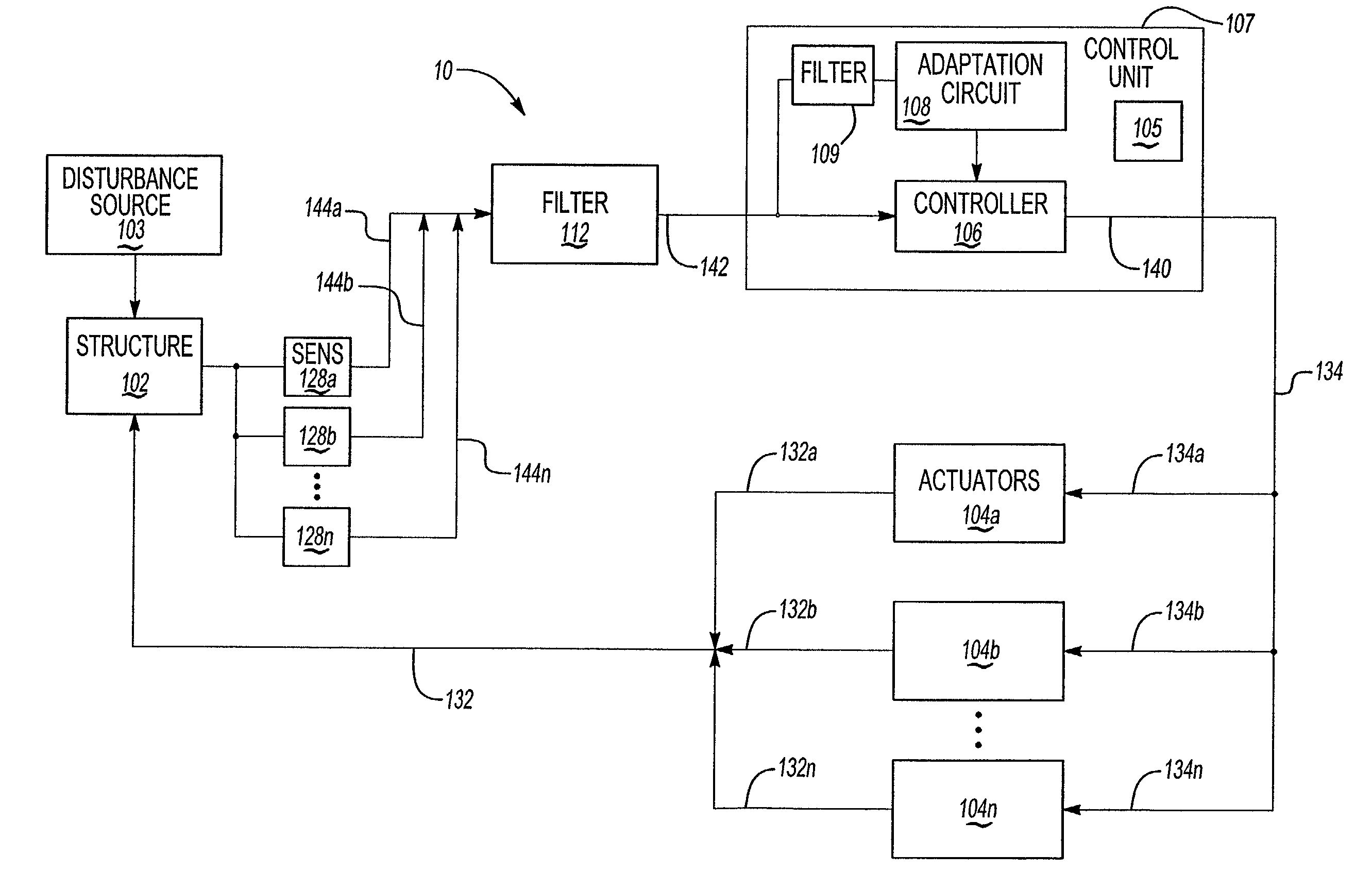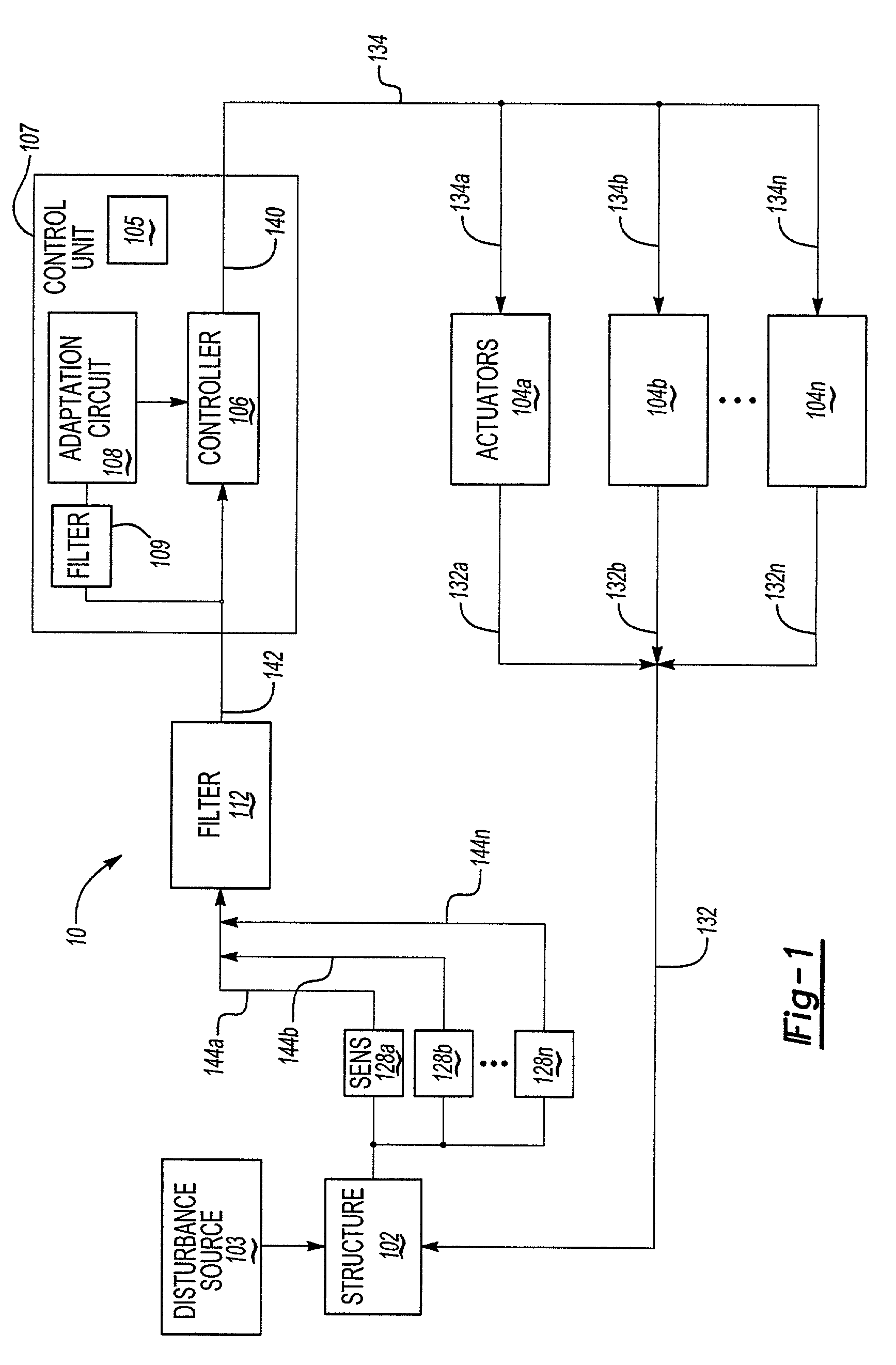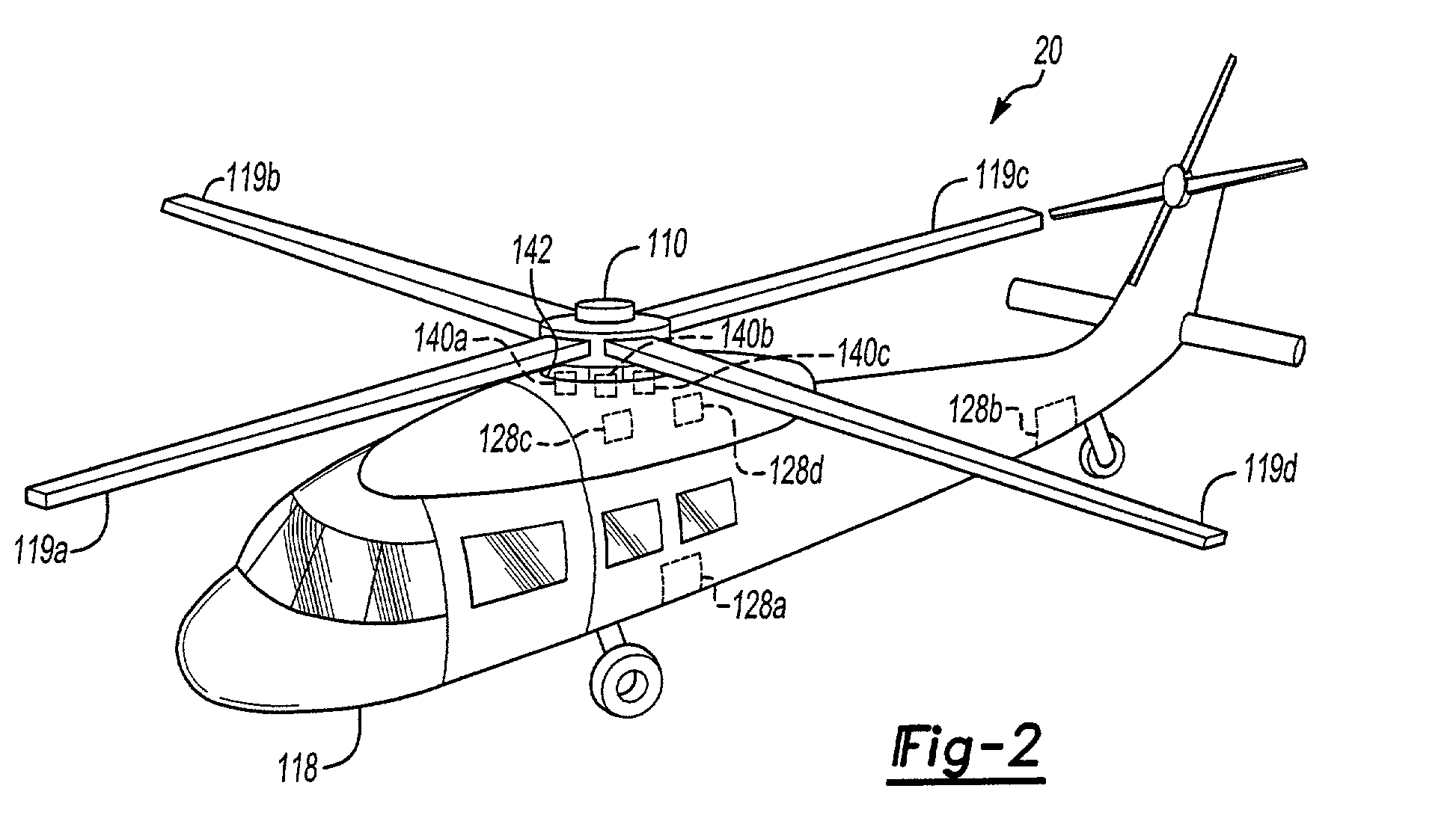System for computationally efficient adaptation of active control of sound or vibration
a technology of active control and computational efficiency, applied in the field of computational efficiency adaptation of active control of sound or vibration, can solve the problems of significant changes in the transfer function between actuator commands, und the computational requirements associated with the adaptation process can be unduly burdensome, and achieve the effect of ensuring numerical stability and minimizing the computation of the control algorithm
- Summary
- Abstract
- Description
- Claims
- Application Information
AI Technical Summary
Benefits of technology
Problems solved by technology
Method used
Image
Examples
Embodiment Construction
[0012]Control systems consist of a number of sensors which measure ambient vibration (or sound), actuators capable of generating vibration at the sensor locations, and a computer which processes information received from the sensors and sends commands to the actuators which generate a vibration field to cancel ambient vibration (generated, for example by a disturbing force at the helicopter rotor). The control algorithm is the scheme by which the decisions are made as to what the appropriate commands to the actuators are.
[0013]FIG. 1 shows a block diagram 10 of an active control system. The system comprises a structure 102, the response of which is to be controlled, sensors 128, filter 112, control unit 107 and actuators (which could be force generators) 104. A disturbance source 103 produces undesired response of the structure 102. In a helicopter, for example, the undesired disturbances are typically due to vibratory aerodynamic loading of rotor blades, gear clash, or other source...
PUM
 Login to View More
Login to View More Abstract
Description
Claims
Application Information
 Login to View More
Login to View More - R&D
- Intellectual Property
- Life Sciences
- Materials
- Tech Scout
- Unparalleled Data Quality
- Higher Quality Content
- 60% Fewer Hallucinations
Browse by: Latest US Patents, China's latest patents, Technical Efficacy Thesaurus, Application Domain, Technology Topic, Popular Technical Reports.
© 2025 PatSnap. All rights reserved.Legal|Privacy policy|Modern Slavery Act Transparency Statement|Sitemap|About US| Contact US: help@patsnap.com



